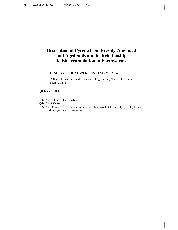摘要
Desorption of pyrene was studied in freshly-amended and 120 d-aged samples of six different soils using a Tenax-assisted method in order to evaluate the influence of soil properties and aging time on desorption. The correlations between desorption percentage (P-d), rapid desorption rate constant (k(rap)), and biota to soil organic matter (SOM) content (> 1% in this study), P-d and k(rap) decreased with the increase of SOM content both in freshly amended and aged soils. This suggests that SOM is the key component for sorption organic pollulants by providing highly active combination sites, where the combined pollutant becomes difficult to desorb. In soils with a relatively low SOM contew (< 1%). clay minerals played an important role through offering nanopores to entrap pollutant molecules, making it difficult for these molecules to diffuse out. Aging signficantly reduced the rate and extent of pyrene desorption. It is reasonable to deduce that, during aging, some of the pyrene molecules moved from "readily desorbing sites" to "relathvely slower desorbing sites," which led to a reduction of desorption. Ln P-d showed a linear relationship with In BSAF for both freshly-amended and aged soils, and In k(rap) only in aged soils. In freshly-amended soils, rapid desorption in some soils is too quick to be the limiting step for bioaccumulation, and, therefore, the elevation BSAF became insignificant when k(rap) was larger than 3 x 10(-3) h(-1).
- 出版日期2007
- 单位南开大学
